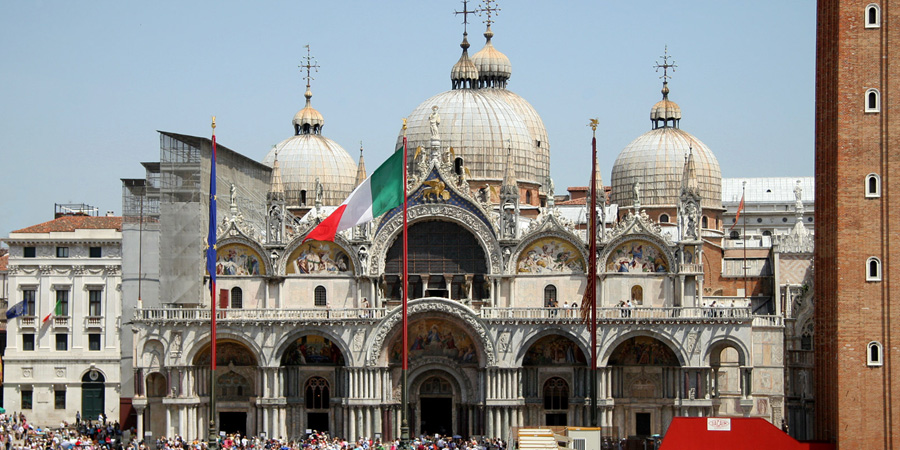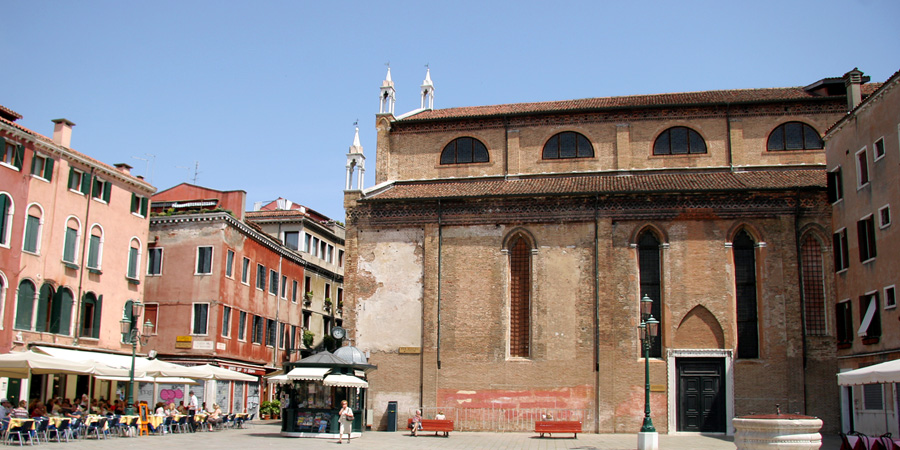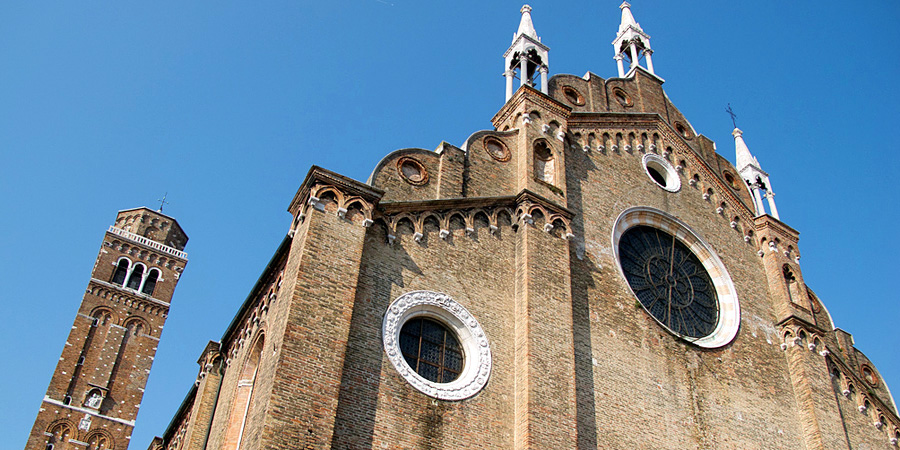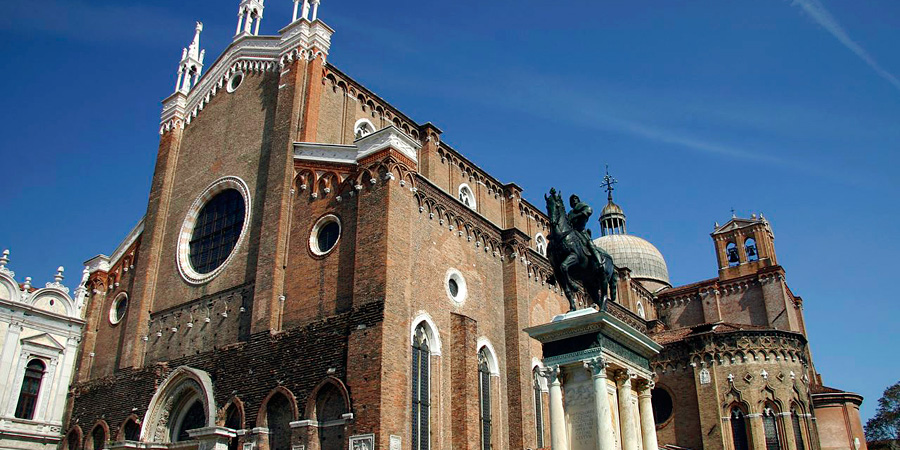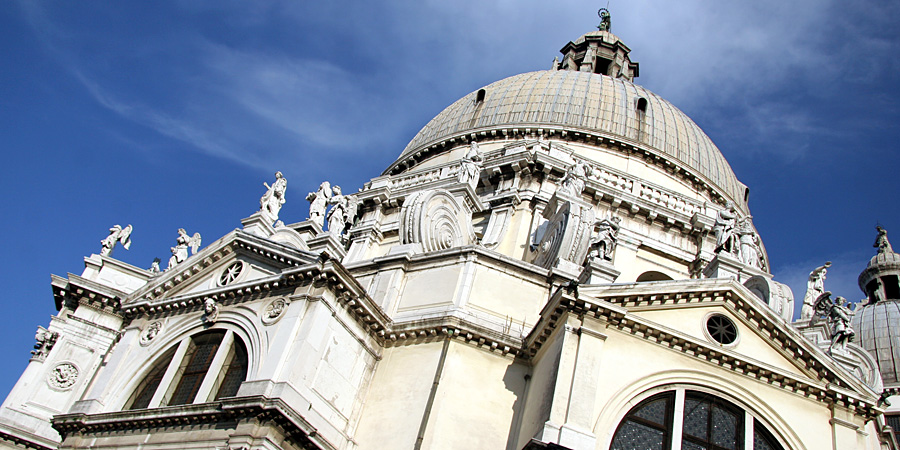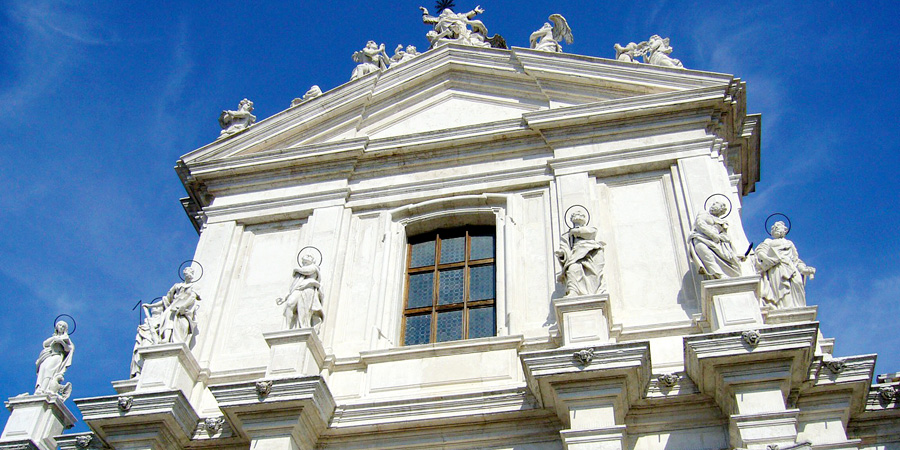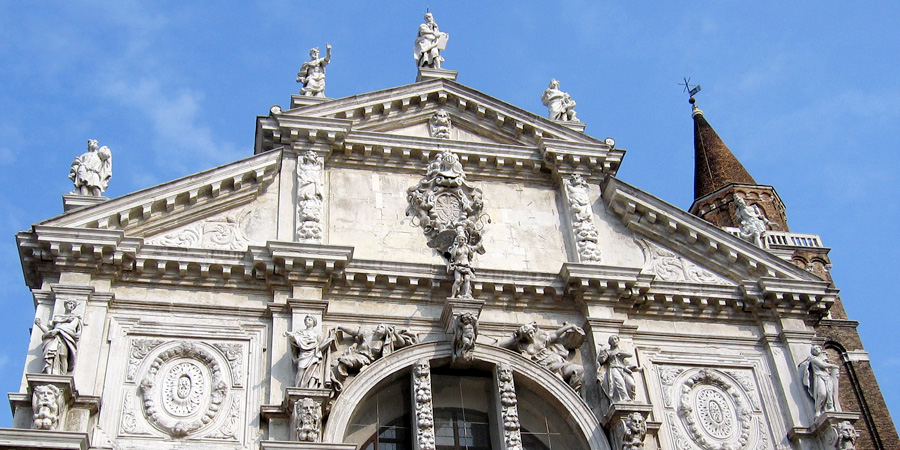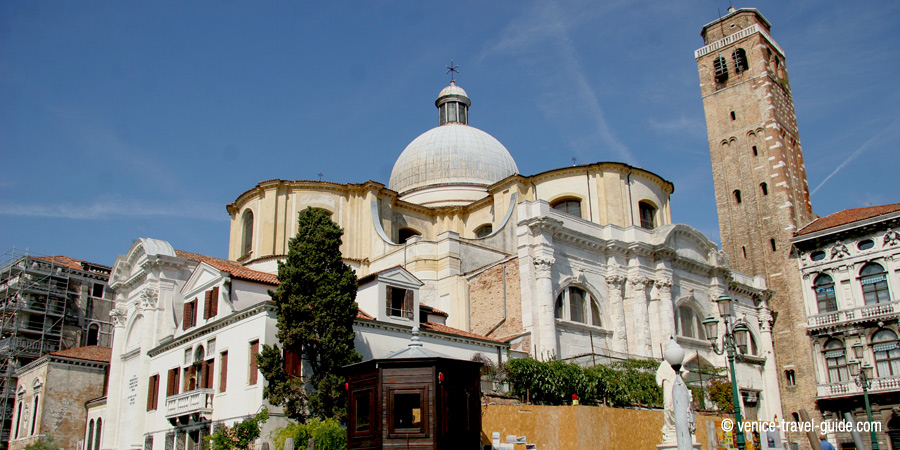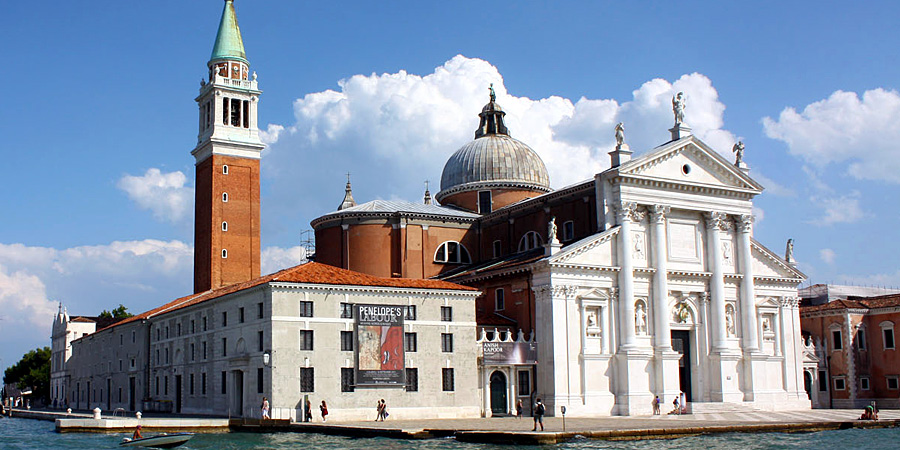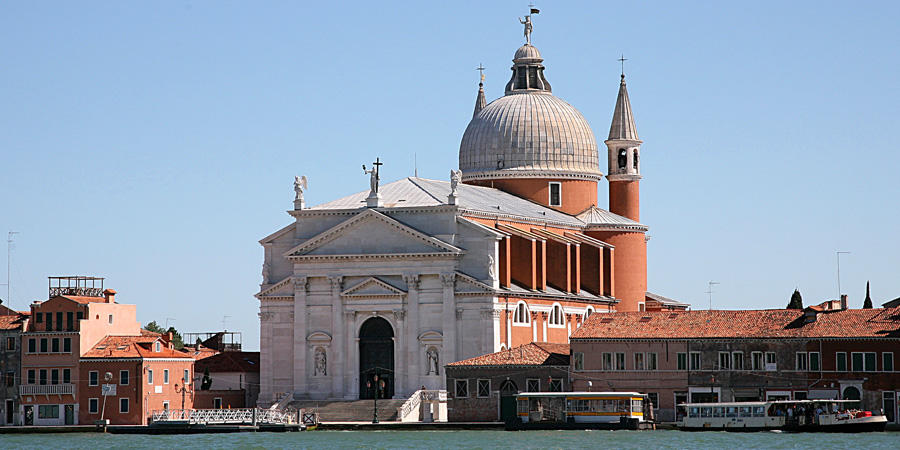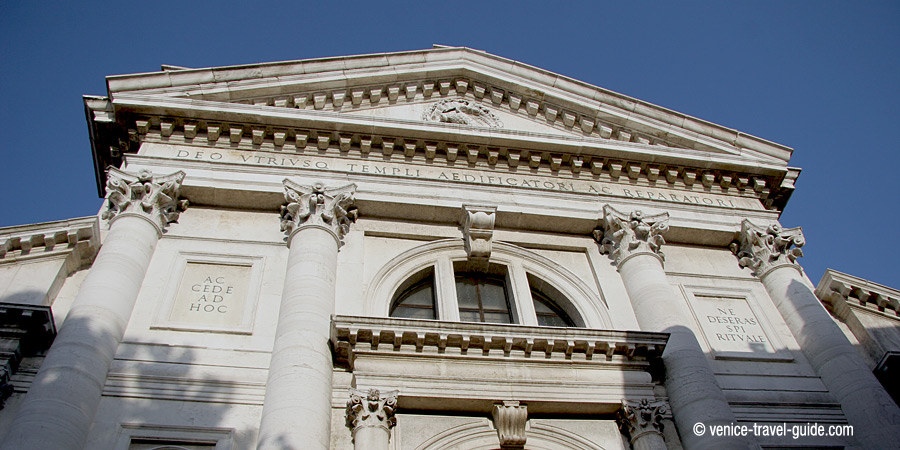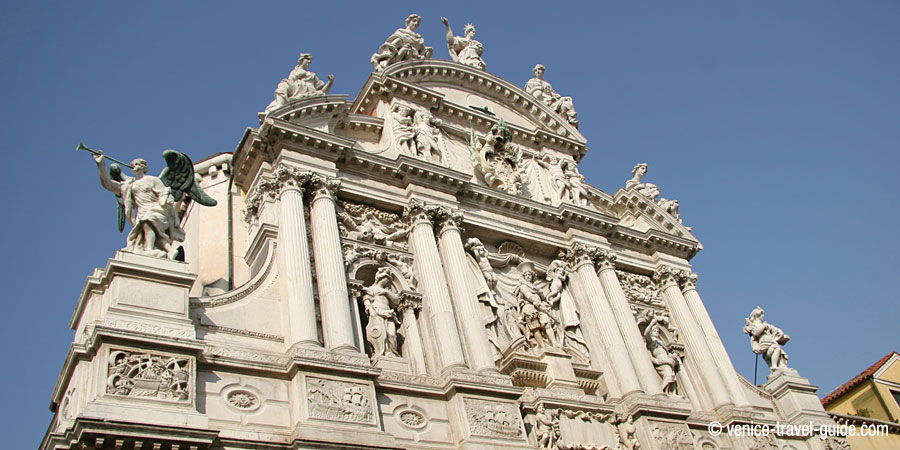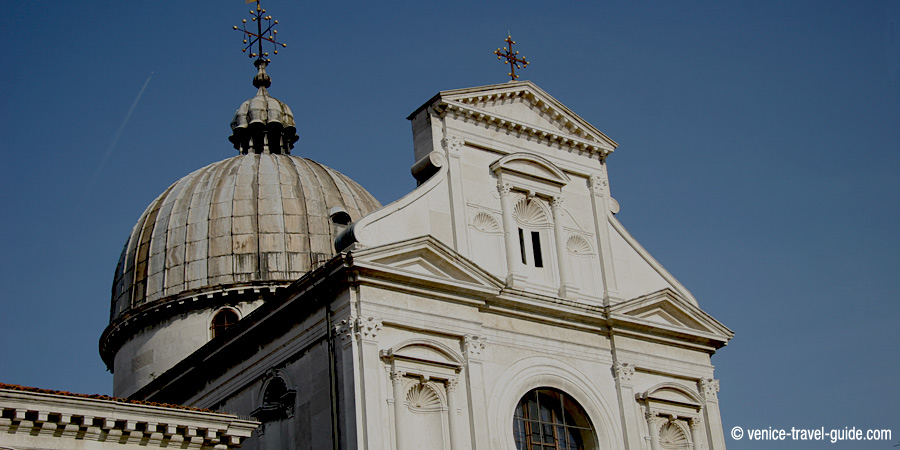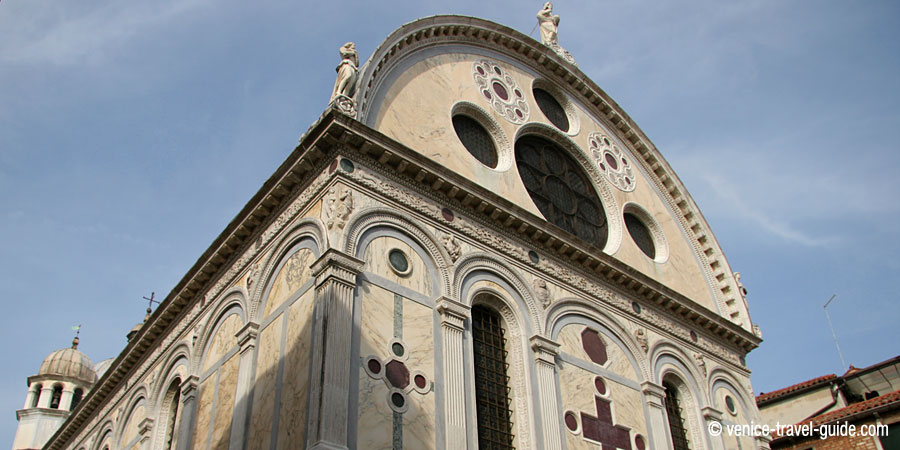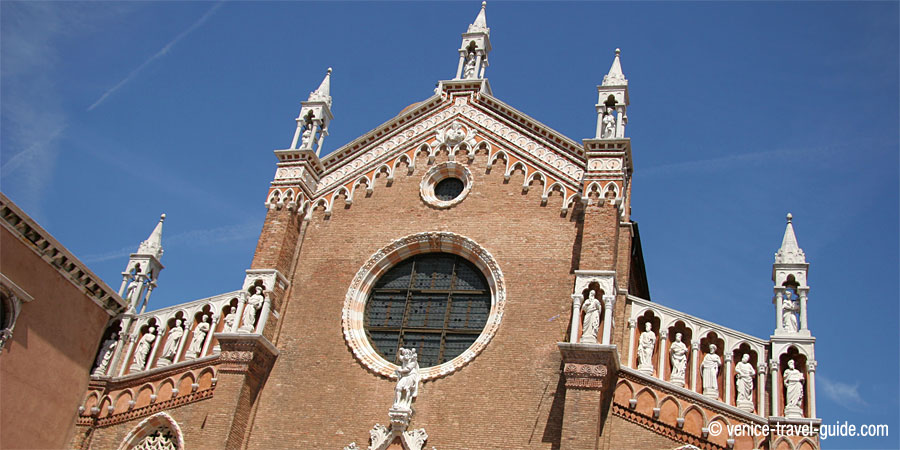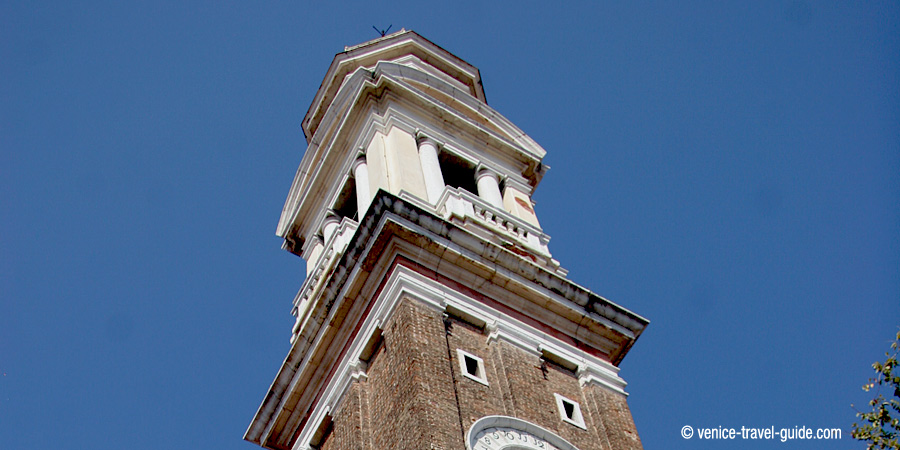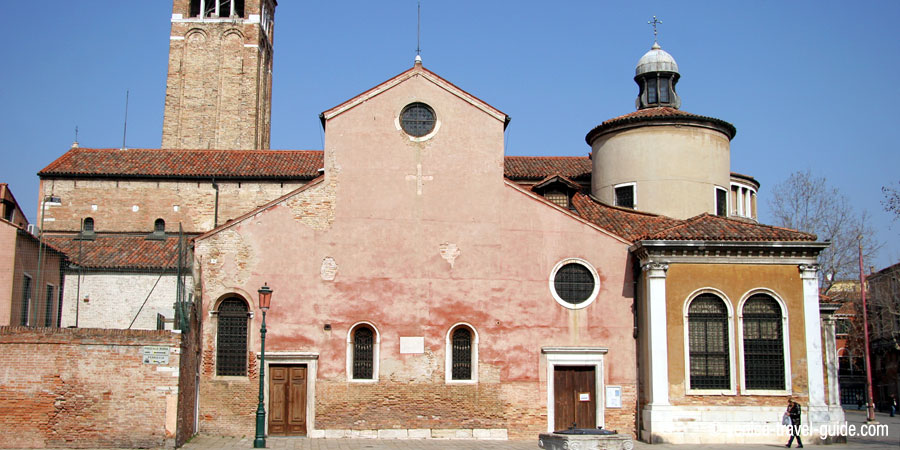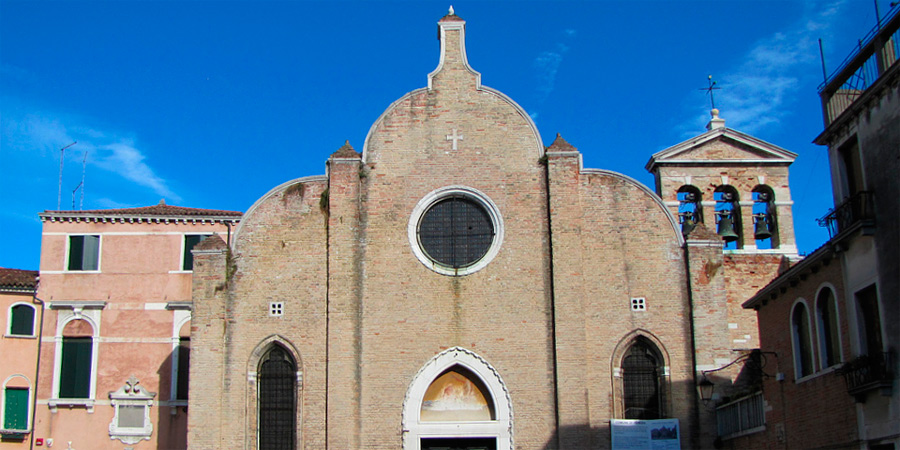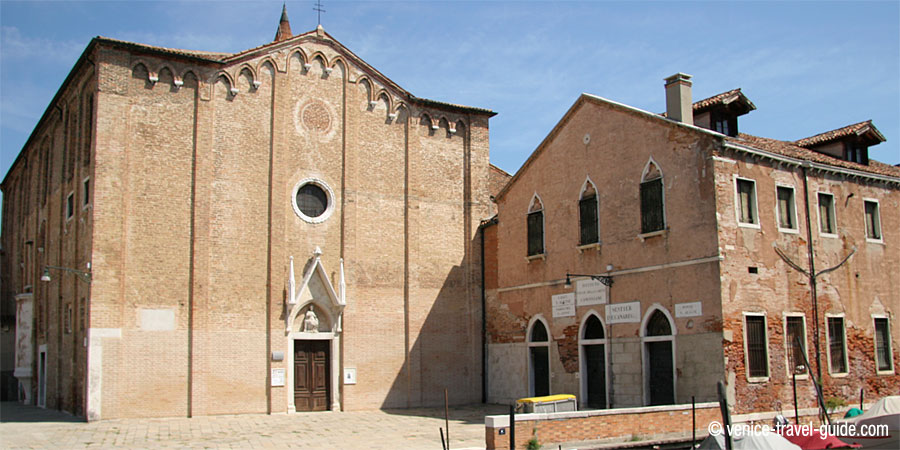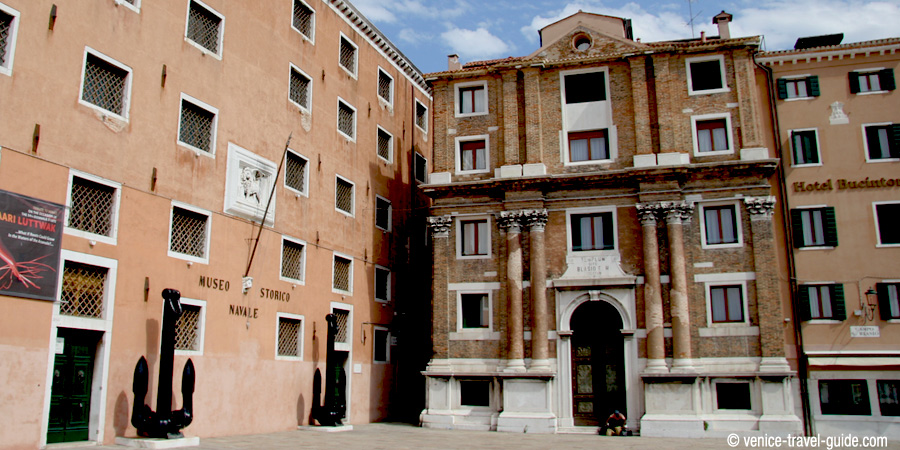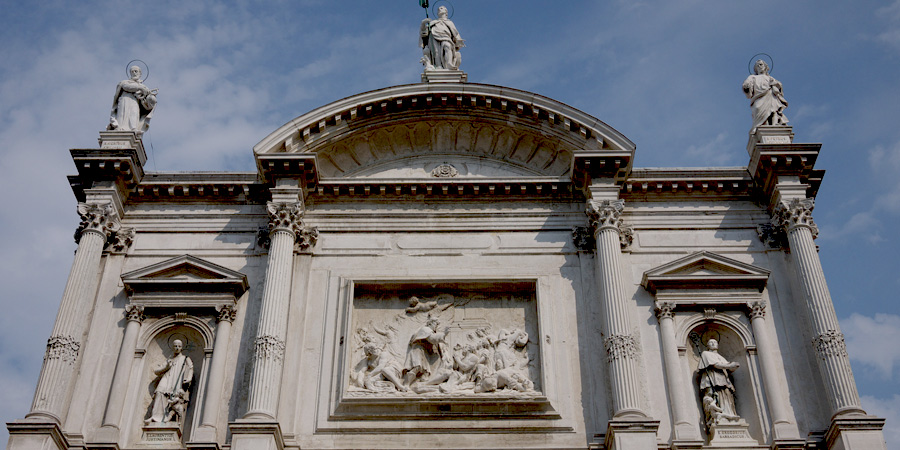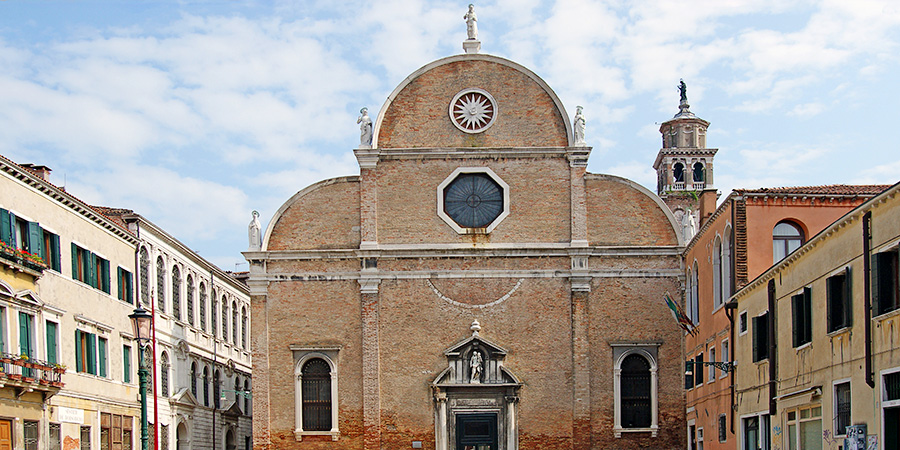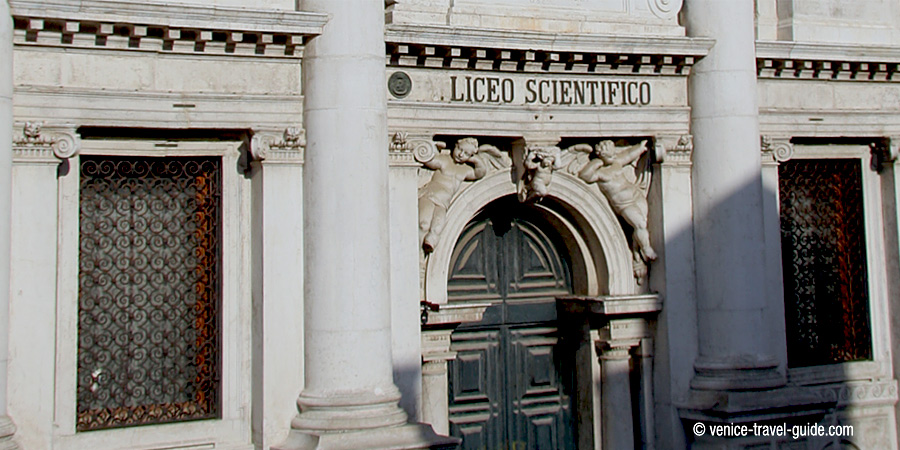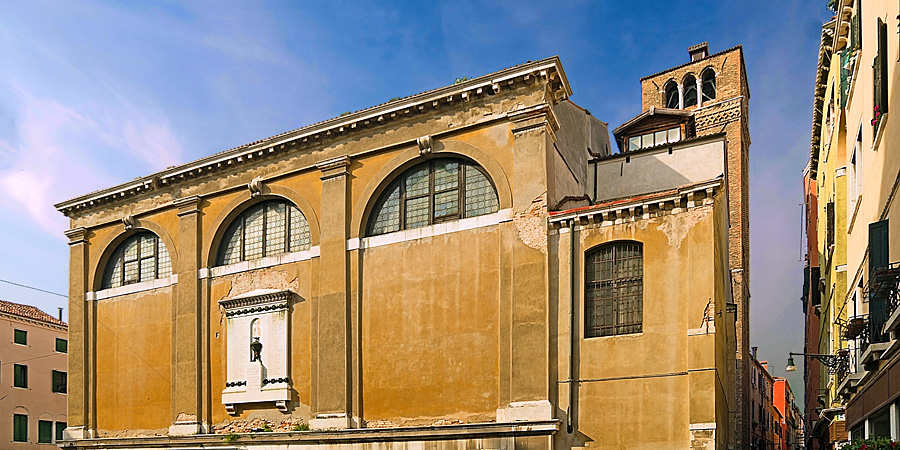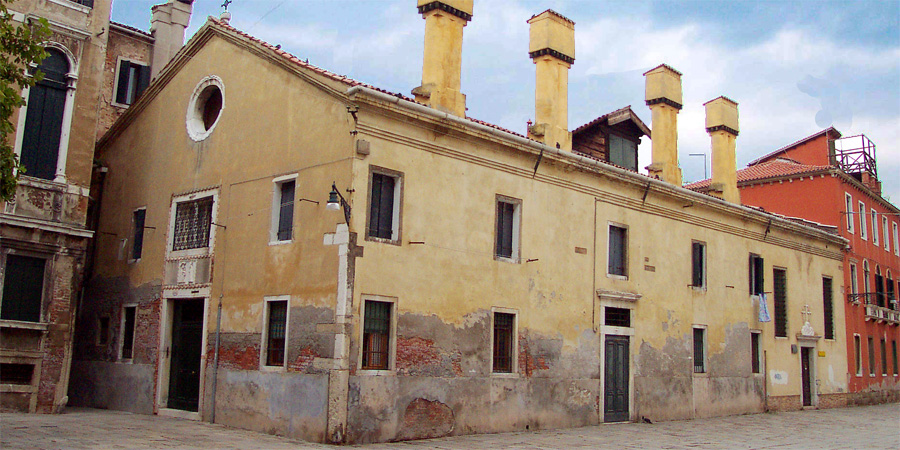The St. Mark's Basilica is the most famous of the city's churches and one of the best known examples of Byzantine architecture. It lies at the eastern end of the Piazza San Marco.
Venice Churches
Although San Marco is free, other famous churches charge an entry fee. If you plan to visit three churches or more, you are better off buying the churches pass. There is also a combined pass for museums, churches and transportation only available at the tourist information office but it is relatively expensive.
There are countless noteworthy churches to be found in the city, both for their architectural merits and for the artistic treasures they contain. Among the most important we can include the Basilica of Santa Maria della Salute, with an octagonal plan, with its imposing dome that stands out at the entrance to the Grand Canal and the famous and majestic Basilica of San Marco, the city's cathedral, located in the square of the same name, next to the Doge's Palace.
Other important religious buildings are: the Basilica of Santa Maria Gloriosa dei Frari, the church of Santa Maria dei Miracoli, the church of San Zaccaria, the Basilica of Santi Giovanni e Paolo, the church of the Redentore, on the island of Giudecca, designed by Andrea Palladio, and the Basilica of San Pietro di Castello, the original cathedral of the city until 1807.
In Venice, including the islands of the Lagoon, more than 200 churches were founded in the course of its history. The sestiere with the largest number of churches is Castello, currently with 29, although it once had 44. Dorsoduro has 27, of which 7 are on the island of Giudecca. Cannaregio has 24. San Marco has 19. Santa Croce has 11 and San Polo has 9.
The Church of Santo Stefano is a large church at the northern end of the Campo San Stefano in Venice. It was founded in the 13th century, rebuilt in the 14th century.
The Basilica di Santa Maria Gloriosa dei Frari, usually just called the Frari, is one of the main churches in Venice. The imposing brick edifice is built in Italian Gothic style. The bell tower, finished in 1396, is one of the highest in the city. The church has many Renaissance masterpieces.
The Basilica di San Giovanni e Paolo is, known in the Venetian dialect as San Zanipolo, is one of the largest churches in the city. After the 15th century the funeral services of all of Venice's doges were held here, and twenty-five doges are buried in the church.
Designed by Baldassare Longhena in 1631-83, Santa Maria della Salute is a Baroque masterpiece. With an octagonal shape and small chapels on the sides, the church's façade is embellished with 125 statues.
The Church of di Santa Maria Assunta, known as I Gesuiti, is a church in Venice, in the sestiere of Cannaregio, in Campo dei Gesuiti, not far from the Fondamenta Nuove.
The Church of San Moisè in Venice is dedicated to Moses, like the Byzantines, the Venetians tended to canonise Old Testament prophets. It also honours Moisè Venier, who paid for it to be rebuilt in the 9th century.
The Chiesa di San Geremia is popular as the seat of the cult of Saint Lucy of Syracuse, whose remains are housed inside. The first church was erected here in the 11th century, and was later rebuilt on several occasions.
San Giorgio Maggiore is a 16th century Benedictine church on the island of the same name in Venice, designed by Andrea Palladio and built between 1566 and 1610.
The Chiesa del Santissimo Redentore (Church of the Most Holy Redeemer), commonly known as Il Redentore, is a 16th century Roman Catholic church located in the sestiere of Dorsoduro.
San Francesco della Vigna is a church in the sestiere of Castello in Venice. Along with Santa Maria Gloriosa dei Frari, this is one of two Franciscan churches in Venice.
Santa Maria del Giglio, whose name translates into St. Mary of the Lily referring to the flower classically depicted as being presented by the Angel Gabriel during the Annunciation.
Santa Maria di Nazareth in Venice, also called Scalzi Church, in front of the Scalzi Bridge and very close to the Venice Santa Lucia train station, is the church of the Discalced Carmelites.
San Giorgio dei Greci is a church in the sestiere of Castello, for centuries, despite the close ties of Venice to the Byzantine world, the Greek Orthodox rite was not permitted in Venice.
Santa Maria dei Miracoli is a church in the sestiere of Cannaregio, also known as the marble church, it is one of the best examples of the early Venetian Renaissance.
The Madonna dell'Orto is a church in Venice, in the sestiere of Cannaregio. The church was erected by the now-defunct religious order, the Humiliati in the mid-14th century.
The Church dei Santi Apostoli di Cristo is one of the oldest churches in the city and has undergone numerous changes since its foundation. The Cornaro Chapel stands out.
Founded in the 9th century, San Giacomo dall'Orio is one of the oldest churches in Venice. Its present form, a Latin Cross with a central nave, two aisles and a transept.
San Giovanni in Bragora is a church in Venice, Italy, located in the sestiere of Castello, it was founded in the early 8th century, allegedly by St. Magnus of Oderzo.
A visit to the Church of Sant'Alvise and the nearby church of Madonna dell'Orto offers you a chance to get to know the real Venice in one of the remotest areas of Cannaregio.
The Chiesa di San Biagio is a church dedicated to Saint Blaise, in the sestiere of Castello in Venice. The church now stands adjacent to the Museo Storico Navale.
The Church of Saint Roch is a Roman Catholic church dedicated to Saint Roch in Venice. It was built between 1489 and 1508 by Bartolomeo Bon the Younger.
The Church of Santa Maria dei Carmini (Saint Mary of Carmel) or simply I Carmine, as it is popularly known, is somewhat hidden from the Campo de Santa Margherita.
Santa Giustina is a church building in the sestiere of Castello, Venice. It no longer functions as a church. It was initially rebuilt in the second half of the 15th century by Augustinian nuns.
The Chiesa di San Cassiano is a 14th century church located in the San Polo sestiere. A church has stood on the site since 726 with the present building dedicated to Saint Cassian of Imola.
The Oratorio dei Crociferi is a treasure trove of works by Palma il Giovane depicting the history of the religious order of the Crociferi, which was founded in the thirtheenth century.
VENICE NAMES
Venezia, Venice, Venecia, Venedig, Venise, Venesia, Venecija, Veneza, Venizia, Venessia, Venesiya, Venedeg, Benezia, Venesië, Feneesje, Feneyjar, Venetiae, Venecija, Venetië, Wénitsiye, Venetië, Wenecja, Venetia, Venediku, Vinezzia, Benetke, Venetsia, Venedik, Venesya, Vignesie, Benátky, Veinéis, Горад Венецыя, Венеция.



